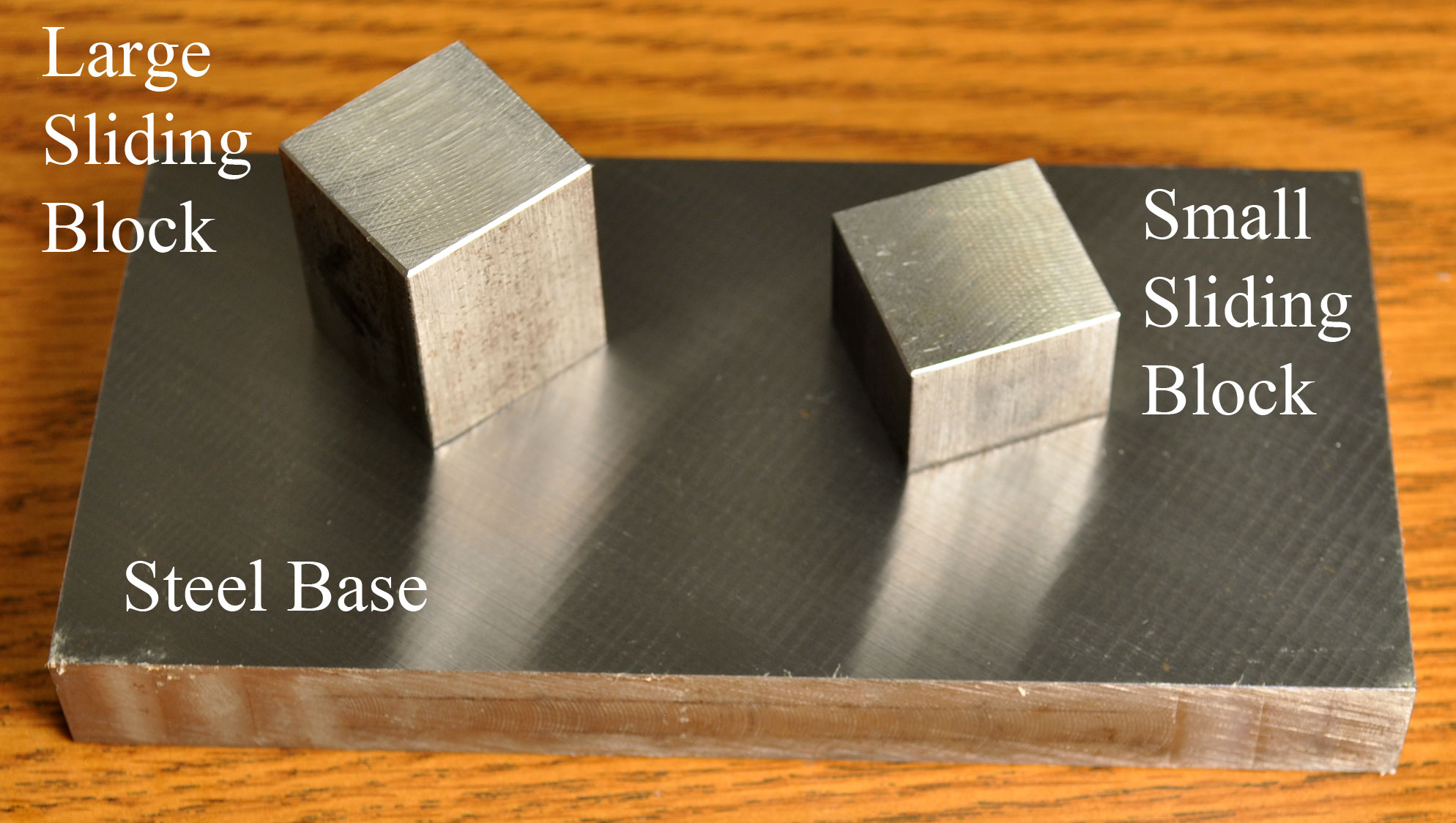Friction Experiment
Objective
The objective of the “Friction Experiment” is to familiarize the students with running a factorial experiment. The students run a 2^3 full factorial to determine the importance of some factors that can influence the static friction force between two dry contacting metal surfaces. The factors being tested are surface roughness and normal force. To test these factors, a steel base and two sliding blocks of different weights are used. The base and blocks both have a rough and smooth side. The effect of surface roughness on the friction force is tested by changing between the rough and smooth sides of the contacting surfaces. The effect of normal force on friction is tested by changing between the small and large sliding blocks. The specific factors and levels being tested are; steel base surface roughness (rough, smooth), sliding block surface roughness (rough, smooth), sliding block size (small, large).
Equipment - per group
The equipment used in this experiment was manufactured in house using scrap material. The cost to produce these parts in a job shop is unknown.
- 1 steel base. One side of the base is rough (milled) and the other side is smooth (surface ground).
- 2 steel sliding blocks. One blocks is smaller than the other. Each block has rough side (milled) and a smooth side (surface ground).
- 1 protractor. ($2.29, Office Max).

Procedure
This following procedure should be followed for every experimental run. Break up into 6 groups. Select each factor according to the random run order specified on the data sheet. Place the appropriate block/surface/orientation combination on the appropriate base surface. (IMPORTANT! Pick a rough side orientation and use this orientation throughout the entire experiment.) Lift the base up until the block starts to slide. Hold the base in this position. Measure the angle of the base relative to the horizontal and note this angle on the data sheet.
Analysis and Discussion
Give a brief summary of the analysis procedures. Include P-values, main effect and interaction plots. Which factors and interactions are significant? If none of your factors/interactions are significant, justify this and discuss why? If some or all of your factors/interaction are significant, optimize your factors to minimize friction. Use any plot/equations you feel are required to do this. Plot and comment on your residuals. How would you improve the accuracy of this experiment?